A Kumauni festival is created when people unwind, celebrate, dance, and sing after the harvest season. Sankranti is seen when the sun moves from one constellation to another. In Kumoun, there is a fair or festival associated with each Sankranti. The Sankranties that are most frequently observed in the area are Fooldeyi, Bikhauti, Harela, Ghee Sankranti, Khatarua, and Uttaraini. The moon determines the dates of other festivals, and the Gregorian calendar is subject to frequent changes. The auspicious occasions include Basant Panchami, Shiv Ratri, Holi, Samvatsar Parwa, Ram Navami, Dashra, Batsavitri, Rakshabandhan, Janmastmi, Nandastmi, Deepawali, and so on.Kumauni Holi
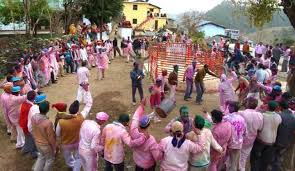
Holi, which is celebrated with great fervor for a week, is a reflection of the pinnacle of joy and happiness. It’s not uncommon to see people dancing and singing along to Majeera and Dholak. Whether it is the Baithki Holi, the Khari Holi, or the Mahila Holi, the distinctive feature of the Kumauni festival Holi is that it is a musical event. The songs that the Baithki Holi and Khari Holi are based on have a hint of melody, fun, and spiritualism, which makes them special. In essence, these songs are based on classical ragas. It makes sense that Nirvan Ki Holi is another name for Baithki Holi.
Beginning on the grounds of temples, where Holiyars (professional singers) perform, the Bait
Harela and Bhitauli:

On the first day of the navaratris (nine day holy period) of the month of Chaitra women fill baskets with soil and sow seven types of grains in them. The grains germinate symbolizing the future harvest. These yellow leaves, called Harela, are cut on the tenth day and people put them on their heads and behind their ears. During the month of Chaitra (March-April) brothers send presents to their sisters and parents to their daughters. These presents are called Bhitauli.
However, the more popular Harela is the one that is celebrated in the month of Shravan to commemorate the wedding of Lord Shiva and Parvati and to welcome the rainy season and the new harvest. On this day people make Dikaras or clay statues of Gauri, Maheshwar, Ganesh etc. and worship them. Even the overworked bullocks are given a rest on the occasion of Harela. People put the blades of freshly cut Harela on their heads and send them to their relatives and friends as well.
Bat Savitri:
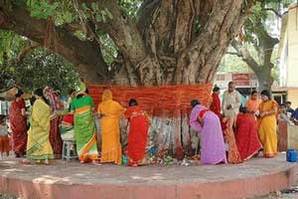
This kumauni festival is observed on the last day of the dark half of the month, known as Krishna amavasya, in Jyestha. Married women worship Savitri and the Bat, also known as the banyan tree (Ficus benghalensis), and offer prayers for their spouses’ health on this day. Women commemorate Savitri and Satyavan by fasting, recalling how Savitri’s unwavering devotion delivered her husband from the clutches of death.
Janopunyu:

Raksha Bandhan and Janopunyu, the day when people change their janeu (holy thread), are celebrated by the Kumaon community. Devidhura in the district of Champawat hosts the renowned Bagwal fair on this day.
On the Shukla dasami of the Jyestha (May–June), Ganga Dusshera, also known as Dasar Ganga Dusshera, is celebrated. On this day, people worship the sacred Ganga and display Dusshera posters, also known as dasars or dwarpatras, on the doors of temples and homes. These posters feature a variety of geometric patterns. Originally handwritten by Brahmins, these posters are now printed. People take baths in the sacred rivers on this day.
Basant Panchami:
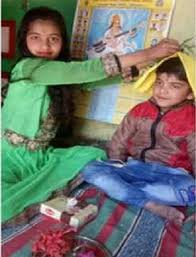
The arrival of spring is celebrated with the Basant Panchami kumauni festival. Usually observed in Magh (January to February), this festival also marks the end of winter. People worship the goddess Saraswati during this festival, wear yellow cloths or handkerchiefs, and in some places, apply a yellow tilak to their foreheads. Additionally, Holi Baithaks begin with this festival.
Ghugutia/Uttrayani
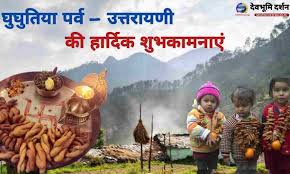
Hindu religious texts state that on the day of Uttarayani, the sun moves from the Zodiacal sign of Kark (Cancer) to the Zodiacal sign of Makar (Capricon); in other words, the sun becomes ‘Uttarayan’ or begins to move northward. It is said that the migratory birds begin to return to the hills on this day, which marks the start of a new season. People participate in the Uttarayani fairs, donate Khichadi (a rice and pulse mixture), take ceremonial dips in sacred rivers, and commemorate the festival of Ghughutia or Kale Kauva on Makar Sankranti. During the Kale Kauva (literally, “black crow”) festival, people shape and deep-fry sweetened flour (flour and gur) into sweetmeats.
Khatarua
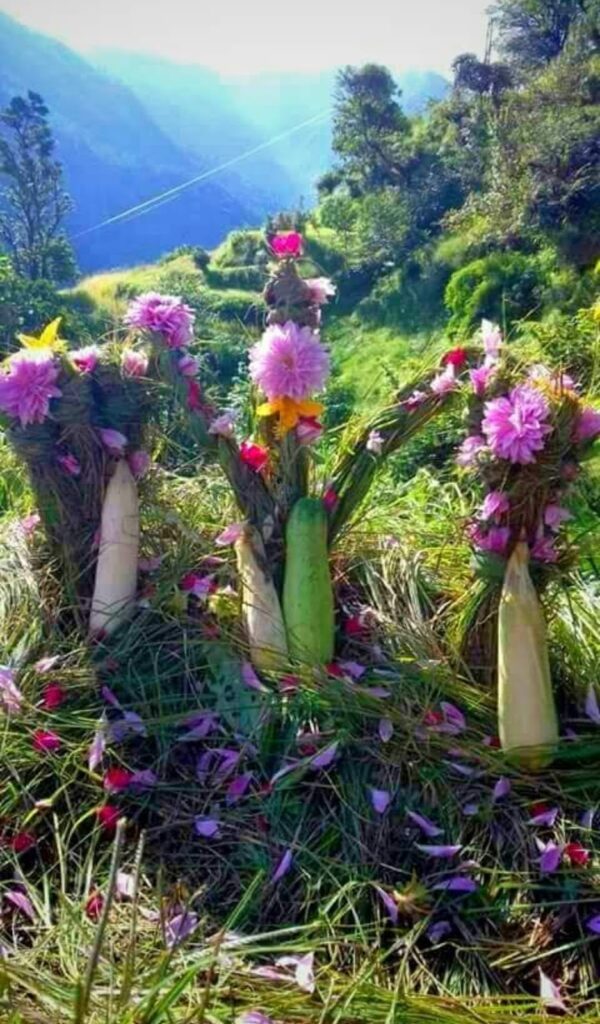
Celebrated on the first day of the month of Ashwin in mid-September, Khatarua is essentially the unique celebration of pastoral-agricultural society and marks the start of autumn. People light bonfires on this day, and kids dance while waving colorful flags. People feed their animals fresh grass and give them special attention. The fire of Khatarua, which is believed to exterminate all malevolent forces, is offered cucumbers.
Another explanation for the celebration of Khatarua is the king of Kumaon’s victory over the Garhwalis. According to legend, the Kumauni soldiers defeated the enemy with banners that showed a cow, and the victory was celebrated with bonfires.
Phool Dei:

In mid-March, on the first day of the month of Chaitra, Phool Dei is celebrated. The majority of the ceremonies on this day are led by young girls. With the arrival of spring, this kumauni festival is observed all month long in some places. During this celebration, young girls carry plates full of rice, jaggery, coconut, green leaves, and flowers to every home in the village or muhalla. They give blessings and gifts (candies, gur, cash, etc.) in exchange for their well wishes for the household’s prosperity.
Hilljatra:
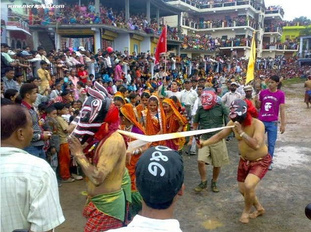
In essence, the Hilljatra is the festival of farmers and pastoralists, and it is observed in some areas of the Pithoragarh district. Gawra Visarjan and the aathon (eighth day of Bhado) were also incorporated into Hilljatra during the development process. Originally introduced in Kumaour village, the festival essentially originated in the Sorar (Mahakali) region of West Nepal and made its way to the Sor valley. The residents of Bajethi, another village close to Pithoragarh town, also embraced the Jatra, and it was introduced as Hiran Chital in the Kanalichhina and Askot regions after undergoing some changes.
Ropai, or paddy plantations, and other rainy-season agricultural and pastoral tasks are associated with the Hilljatra (Hill = mud, Jatra = Jaat). Additionally, it has been linked to the triumph of
